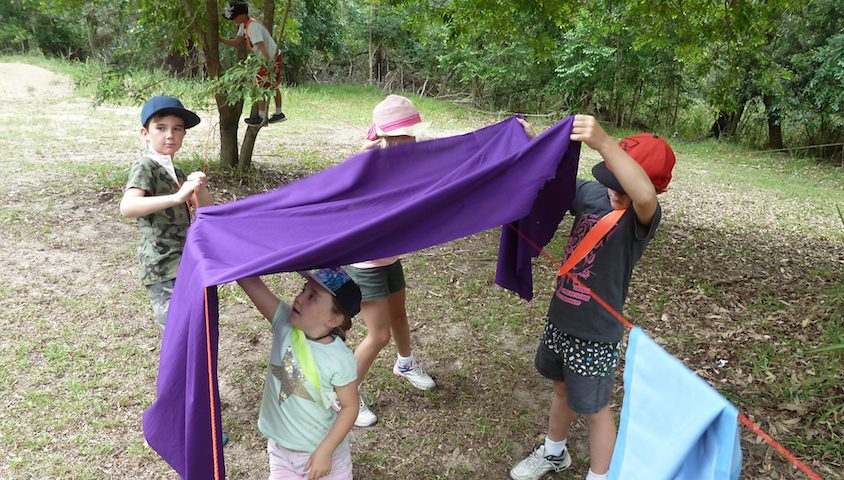Kids in nature.
The benefits may seem obvious to ‘grown ups’ and they are widely reported on. But what’s going on inside the minds of children who have experienced these benefits directly? Do they realise the enormous potential of the outdoors for their development?
During the summer school holidays, I spent a couple of weeks facilitating kids’ nature play activities. With a flexible structure including shelter building, beach play, games, art and exploration, the outdoor model of vacation care is an emerging trend in Australia. At Outdoor Connections, the five to 12-year-olds are dropped off at 9am and collected at 3pm, somewhat dirty and recounting stories of adventure, and carrying some eclectic nature artwork to adorn their shelves at home.
As an educator, I perceive the benefits of kids being outdoors to be substantial. Watching them play in local parks using binoculars, discovering how to build beach shelters or rig up zipline in a tree reflects a day experiencing nature through exploration. When children recognise a bird, use natural resources in artworks or discover the habitats of sand creatures, there is a strong sense of children engaging in their environment.
However, the children themselves are ultimately the experts, so I decided to ask them what they thought the benefits of being outdoors were.
During a holiday program at Seven Mile Beach National Park, I found some experts digging in the sand. Nine year old Jorja tells me, “I want to spend more time outdoors because when you are inside you do not get to be active. You watch the TV and play the Xbox”. Perceptively, Jorja has voiced the same concern many experts have identified as a growing trend.
Research claims children playing outside are generally more active and develop gross motor skills. Alarmingly, the prevalence of myopia is increasing, with the perceived reason being our eyes are constantly focused on screens and not engaging our vision outside.
Jorja goes onto say: “The outdoors makes me calm and I can interact with the environment”. Spending time in nature promotes our overall wellbeing, including our ability to regulate our behaviours to be calm.
Siblings Hannah and Tom, take their mum straight back down to the beach at the end of the day’s program to show off their marlin sand sculptures. They are instantaneously connected to the place we spent our day. A connection to place is the beginning of a care and love for the natural world, a bond that can only truly be developed as we experience our environment. Interacting with the outdoors encourages deep learning about the places we visit, this is known to increase the environmental stewardship presented in later life.
For many children attending outdoor holiday programs it’s the newly made friendships that are their focus. Sitting in a tree tying rope, seven year old Harry tells me, “When I’m outdoors, I can make friends. When I’m inside my house there are not many people there, outside people want to play”. Next to him, nine year old Ben says outdoors he can “be with friends. I can build and play with my best friend”. These kids are connecting to each other as much as with the environment they are experiencing.
When nine-year-old Nathan falls out of the tree, he picks himself up and, after composing himself, continues playing. “I’m ok,” he mumbles and continues making a tree swing with rope. Taking risks is part of outdoor play, and having the resilience to carry on is one of the biggest learning curves. Nathan says, “I used to find climbing the tree hard, I still do. But I am ok now. I’ve worked out how to do it”.
From the kids perspective being outside is a good thing for them, it must be true – after all they are the experts. Grown up Wild readers already know why they go outside. The play children engage in is the beginnings of these engaging, fun and meaningful experiences for them. For the kids, outdoor fun is hopefully the beginning of a life spent nurturing their own health and spirit of adventure.
Amanda Lloyd is an educational consultant and teacher specialising in outdoor learning. This is the second column she has produced for Wild, appearing in issue 158.


